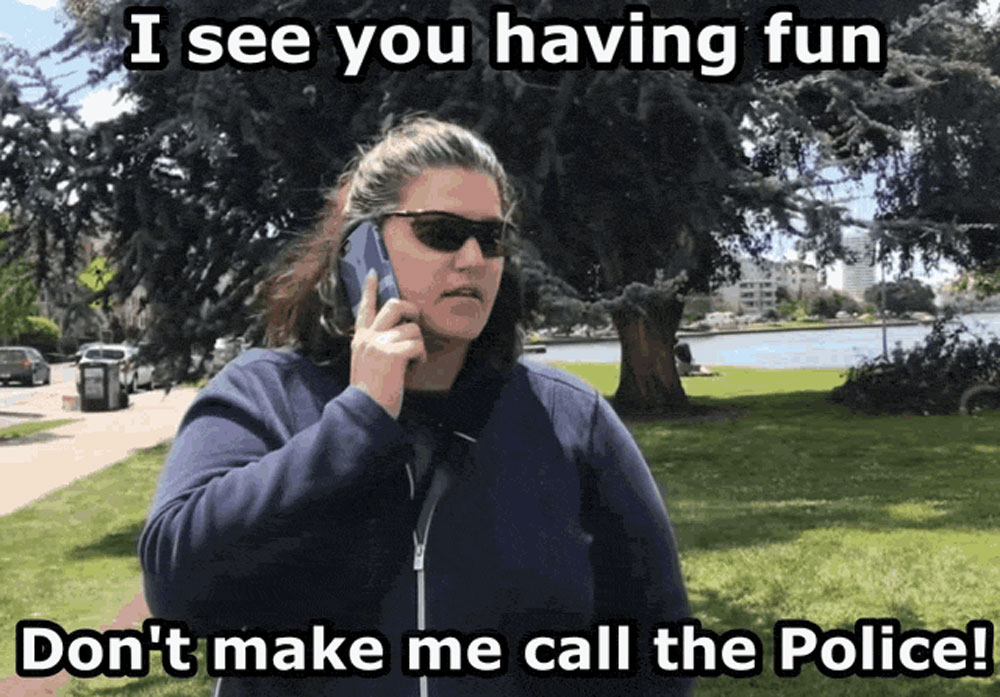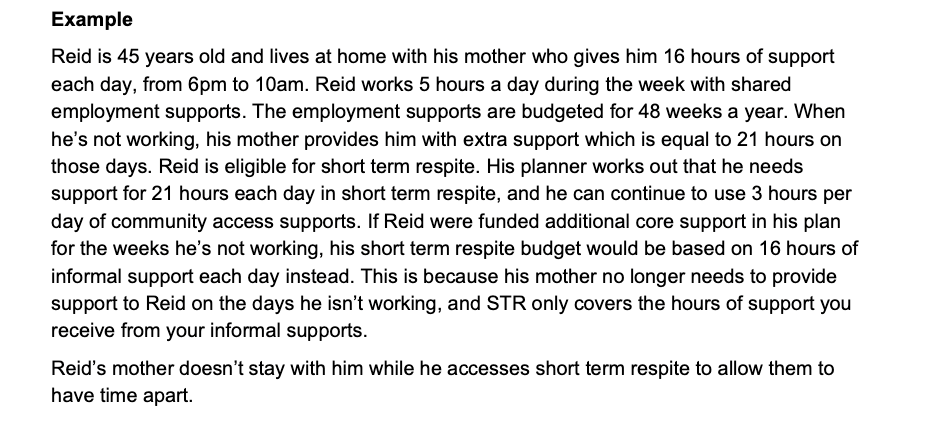On 20 October, the NDIA finally released its long-awaited Short Term Accommodation (STA) Operational Guidelines… but wait, as you might have heard by now/gathered from the title, it’s not called STA anymore, it’s been renamed Short Term Respite (STR). Though it’s really less of a re-name and more of a retro-name.
OGs provide information about how the NDIA will implement the Scheme and make decisions. They are policy documents rather than legislation, such as the NDIS Act or NDIS Rules. They should also not to be confused with original gangsters.
Beyond the rebrand, the OGs made significant changes to the eligibility for STR, how the funding can be spent and the quite complicated calculations to determine the level of support. In this article, we’ll dig into all those details. But first, let’s address the name issue, shall we?
What’s in a name?
A question first asked by Shakespeare's Juliet. But given how that play ends, maybe she’s not the best person to turn to for advice.
The NDIA originally had good reasons for ditching the name 'respite' in favour of 'STA', which the Independent Advisory Council suggested way back in 2014. The word ‘respite’ rather strongly implies that people with disability are burdens to their loved ones. Now, we can all agree that NDIS acronyms can get pretty silly, right? ‘STA’ didn’t exactly roll off the tongue. But now we’ve got a silly acronym that includes a word many people find offensive - literally the worst of both worlds!

And look - this is far from the most important point - but respite is by its very nature short-term. So the name doesn’t make a whole lot of sense.
More significantly, the name switch doesn’t seem purely symbolic. There is much less focus in these OGs on STR being used to help people build skills and try new things. Instead, the emphasis is on giving informal support networks a break from their caring duties.
What can STR funding be used for? (And don’t you dare answer a holiday!)
The new OGs provide more detailed, stricter guidance on how STR funding can be spent.
According to the OGs, STR is designed to cover the cost of ‘standard’ accommodation, with no extras. ‘Extras’ is not defined, so I’ll leave that up to your imagination. But the guidelines do say accommodation should be ‘clean and comfortable and include basic amenities.’ Accommodation can include hotels, motels, short-term rentals, as well as centre-based respite accommodation (which isn’t defined). STR funding is also intended to cover the cost of supports usually provided by informal supports, including things like support cooking, cleaning, with personal care, etc. A person can also choose to stay in their home and have support come to them, but in these cases, the NDIA wouldn’t cover the cost of accommodation. If the person with a disability goes to stay with a friend or family member, this would be considered informal support and wouldn’t be funded as STR in the person’s plan.
The OGs make it very clear: This. Is. Not. A. Holiday. The old OGs said this too, but these guidelines really hammer the point to within an inch of its life. To make sure nobody has an accidental holiday (god forbid), the NDIA has made some new rules, including:
- Accommodation must be ‘stationary.’ Cruises- officially off-limits. Tabloids across the country can rejoice. Presumably, caravans and houseboats are out too. A good test would be: did you wake up in a different place to where you went to sleep? Because if yes, either a) you’ve been kidnapped and should call the police or b) you’ve been in non-stationary accommodation and the NDIA’s Payment Integrity Audit team could come after you.
- The NDIA generally expects people to stay in their home state or territory, unless they live on a border town, in which case exceptions might be made. Naturally, overseas is not an option.
- People are expected to pay for their own meals and activities, unless they are staying at a centre-based respite accommodation, where these costs are included in the overall rate.
- STR funding can be used to cover the cost of a support worker assisting a person to participate in an activity, but not the activity itself.
- Transport can’t be included in the overall cost of STR. People with transport funding in their plan can use this pool of money to cover the cost of getting to STR accommodation through usual general transport or activity based transport item supports. Only people living in remote areas who need to travel long distances can use their Core budgets for transport to STR. Airfares can’t be funded or billed.
 Just so you know, the NDIA isn’t anti-holidays. The OGs say ‘Having a holiday with your family or friends is a good way to relax and visit a new place.’ Which is a good thing to have on the public record.
Just so you know, the NDIA isn’t anti-holidays. The OGs say ‘Having a holiday with your family or friends is a good way to relax and visit a new place.’ Which is a good thing to have on the public record.
Eligibility criteria for STR
The new OGs have much stricter criteria to determine who is eligible for STR. In the previous OGs, there was vague guidance based on the reasonable and necessary criteria, but these OGs are adding a lot more rules and restrictions. Let’s look at it in more detail.
For adults
To receive STR funding, an adult with a disability must:
- Live with or get daily drop-in support from their primary informal supports. The OG defines primary informal support as the family or friends who provide the majority of the person’s unpaid, disability support.
- Receive at least 6 hours of support a day from their primary informal supports, on a long-term basis - this hourly minimum wasn’t in the previous OGs.
The OGs also now state that one of the following factors must apply:
- The person receives high-intensity support, like complex bowel care, enteral feeding and management, severe dysphagia management, etc.
- The person has intensive or complex behaviour support or needs specialist behaviour intervention support.
- The person lives in an area where alternative forms of in-home support aren’t easily available.
- The wellbeing of the primary informal supports is at risk.
- The primary informal supports have other caring responsibilities.
There are also new rules about when the NDIA won’t fund STR for adults, including when the person:
- Receives more than 18 hours of paid support a day. This is probably going to be a more important criterion than whether informal supports are providing at least 6 hours of support a day, because the NDIA has no easy way of measuring informal support. However, it will mean some informal supporters will be ineligible for STR even if they are providing more than six hours of support a day, if some of that time is working alongside support workers.
- Lives in Support Independent Living (SIL) accommodation.
- Receives funding for Individualised Living Options (ILO).
- Needs to live away from home while they are waiting for home modifications to be completed - the OGs say that Medium Term Accommodation might be more appropriate in that case.
- Is experiencing a housing crisis - in which case, the OGs suggest the person contact state and territory homelessness services.
- Lives alone and doesn’t have drop-in supports.
- Wouldn’t use STR to have a break from their informal supports.
- Would use STR to pay for a day-to-day living cost, like mortgages, rent or utilities.
STR for children
The OGs say that the NDIA will only fund STR for people under 18 in ‘exceptional circumstances’, putting more emphasis on broader parental responsibilities.
When deciding whether to fund STR for people under 18, the NDIA needs to know whether the informal support:
- Provides at least 6 hours of disability-related support a day, which is beyond the level of support usually needed by a child of the same age.
- Needs help to sustain their caring role.
- Is the primary carer and lives with the child- STR can’t be funded for children in statutory out-of-home care.
- Other supports have been considered, such as in-home or community access support.
And at least one of these other factors also must now apply:
- Another member of the household has a significant disability or developmental delay.
- The informal supporters have a serious health concern, are at risk of not being able to sustain the caring role or ‘are ageing’ (which is technically every person on Earth, FYI).
- There are ‘identified risks’ with support being provided in the home. This criterion is pretty vague. What risks? Identified by whom?
- The child is at risk of entering out-of-home care due to their disability-related support needs. In these situations, the NDIA might fund up to 60 days of STR per year, exceeding the usual maximum of 28 days.
- The child lives in an area where other in-home support isn’t easily available. Like, for example, if the child lives in a rural or remote community.
Level of support
The new OGs introduce rules for calculating how much STR funding a person should receive and - let me tell you - this is where things get complicated.
The general rule is that the NDIS will only fund 28 days of STR per year, except in exceptional circumstances, and no more than 14 days in a row. The level of funding is designed to reflect the amount of support a person usually receives (and considers whether some of this support is shared). The new OGs say the NDIA will calculate the magic number based on the number of hours of informal and paid supports the person gets per day, whether the person can continue to get support from their regular paid supports while in STR and if the person needs a higher ratio of support at certain times of the day.
The OGs also say that the NDIA might reduce the person’s funding for other regular supports that they won’t need while they’re in STR. For example, they might not need their morning in-home support while they’re staying at a group-based respite centre, so the yearly amount of funding for morning support would decrease slightly. The NDIA says this is because the Scheme rules don’t allow the duplication of support.
If all this is in danger of making sense, then don’t worry, the NDIA provided this handy case study as an example. But, a warning, it has been known to induce stress-related headaches:
 Gosh, did any of us get into the disability sector because we liked math? Let’s hope those planners have a calculator handy.
Gosh, did any of us get into the disability sector because we liked math? Let’s hope those planners have a calculator handy.
But the latest Pricing Arrangements and Price Limits (PAPL), which was released a mere 6 days before this new OG, sets the price limit on a per day basis. Not based on whatever complicated hourly/seasonal stuff is going on in that example. But, then again, that PAPL also refers to STA, so I don’t know what to believe any more.
Getting STR funding in a Plan
The process for getting STR funding into a Plan hasn’t changed. The participant or their informal supports should have a chat with their Planner.
STR funding will go into the flexible Core part of the budget. However, it’s unclear how the NDIA will respond to people using their flexible Core budget on STR if it isn’t listed in the Plan. This line from the original OGs has been removed from the latest version ‘Remember, you may not need funding for Short Term Accommodation put into your plan. You can choose to use your Core budget on supports like Short Term Accommodation if it helps you pursue your goals.’
Technically, there’s no written rule requiring a person to have STR mentioned in the Plan to qualify for the support. But, the NDIA’s Payment Integrity Audit (PIA) team have been laser-focused on respite services lately and often ask “has STR been included in the person’s Plan”, so it’s worth weighing up the risk.
Final notes
Respite services have been under some tough scrutiny recently, both from the media and the NDIA’s fraud team. Recent data shows this is having some effect, with payments down 47% in June and 3,000 providers exiting the sector (NDIA).
It’s not surprising that the idea of a “taxpayer-funded holiday” can rile up sections of the public - to a certain extent, it’s even understandable. But the other side of the coin is that for adults with a disability, many of their informal supports are ageing parents. Providing a minimum of 6 hours of informal support a day equates to 42 hours a week, 4 hours more than what is considered a full-time job. That means informal supports are effectively saving the NDIS the equivalent of a full time staff member each week. Yet, nobody, no matter how much they love their job, is expected to work every day of the year without a break. And if the person with the disability happens to have some fun while the people who support them rest, is that really the crime of the century?
Carer Gateway also provides free planned or emergency respite. To learn more, go to their website: Planned or emergency respite- Carer Gateway. We also discuss some of the other supports and services provided by Carer Gateway in this article: Free services available for informal supports/carers
If you want to read the full OGs you can find them here: Our Guidelines- NDIS
Sam Paior from the Growing Space also has a great video on the new STR guidelines that I encourage you to check out: The Growing Space- Facebook
Finally, for providers wanting to understand the ins-and-outs of STR and navigate this risky landscape, check out our upcoming workshop: Understanding Short Term Respite in the NDIS.
:format(jpg))
